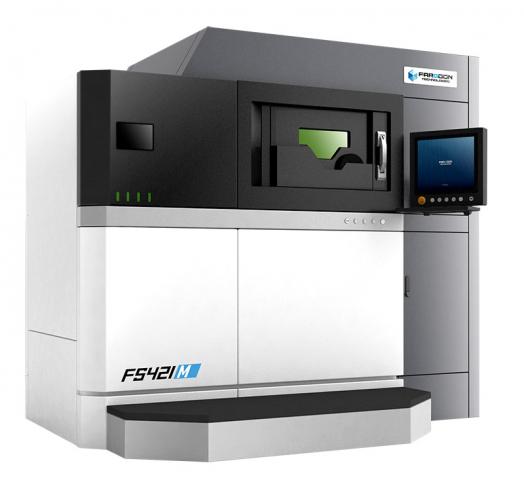
Title: Unlocking Innovation: The Impact of Industrial 3D Printers on Manufacturing
Introduction: In modern manufacturing, industrial 3D printers have changed the game, revolutionizing traditional manufacturing methods and opening up new opportunities for innovation. These advanced additive manufacturing technologies enable businesses to create complex geometries, reduce lead times and optimize production processes across a wide range of industries. Let's take a deeper dive into the world of industrial 3D printers and explore their transformative impact on prototyping, tooling, and manufacturing applications.
Additive Manufacturing Technologies: Industrial 3D printers use a variety of additive manufacturing technologies, including fused deposition modeling (FDM), stereolithography (SLA), selective laser sintering (SLS), and direct metal laser sintering (DMLS), among others. Each technology offers unique advantages and capabilities for producing parts and prototypes accurately and efficiently. From thermoplastics to metals, industrial 3D printers can produce components with exceptional precision and mechanical properties, making them an invaluable resource in manufacturing operations.
Prototyping Applications: One of the primary applications of industrial 3D printers is rapid prototyping, allowing businesses to quickly iterate and refine a product design before full-scale production. By creating functional prototypes directly from digital models, manufacturers can speed up product development cycles, reduce costs, and reduce the risks associated with traditional prototyping methods. Industrial 3D printers allow designers and engineers to test concepts, validate designs, and optimize product performance with unmatched speed and flexibility.
Making Tooling and Jigs: Industrial 3D printers are also used to make custom tooling, fixtures, and jigs used in manufacturing processes. Using additive manufacturing, businesses can create custom tooling solutions tailored to specific production requirements, reducing lead times and costs associated with traditional tooling methods. From injection molding inserts to assembly jigs, 3D printed tools improve the accuracy, repeatability and efficiency of manufacturing operations, resulting in increased productivity and quality.
Manufacturing Applications: In addition to prototyping and tooling, industrial 3D printers are increasingly being used in manufacturing environments to produce end-use parts. Thanks to advances in materials and printing technologies, 3D printed parts can meet the performance and quality standards required for a variety of applications, including aerospace, automotive, healthcare and consumer products. From lightweight structures to complex assemblies, industrial 3D printing enables on-demand manufacturing, customization and supply chain optimization, increasing flexibility and competitiveness in the global marketplace.
Advances in Industrial 3D Printing: Continuous improvements in industrial 3D printing technology, such as increased print speeds, increased build volumes, and improved material properties, are expanding the capabilities and applications of additive manufacturing in the manufacturing industry. Advanced software tools and simulation capabilities enable designers to optimize designs for additive manufacturing, maximizing part performance and resource utilization. As industrial 3D printing continues to evolve, businesses can expect further innovation and integration into core manufacturing processes, opening up new opportunities for growth and differentiation.
Conclusion: Industrial 3D printers have changed the manufacturing landscape, offering unmatched versatility, efficiency and innovation in prototyping, tooling and production applications. As businesses continue to adopt additive manufacturing technologies, they gain a competitive advantage by accelerating product development cycles, reducing costs and unlocking new design possibilities. With continued advancements in technology and materials, industrial 3D printing has the potential to revolutionize the manufacturing industry and shape the future of manufacturing.






